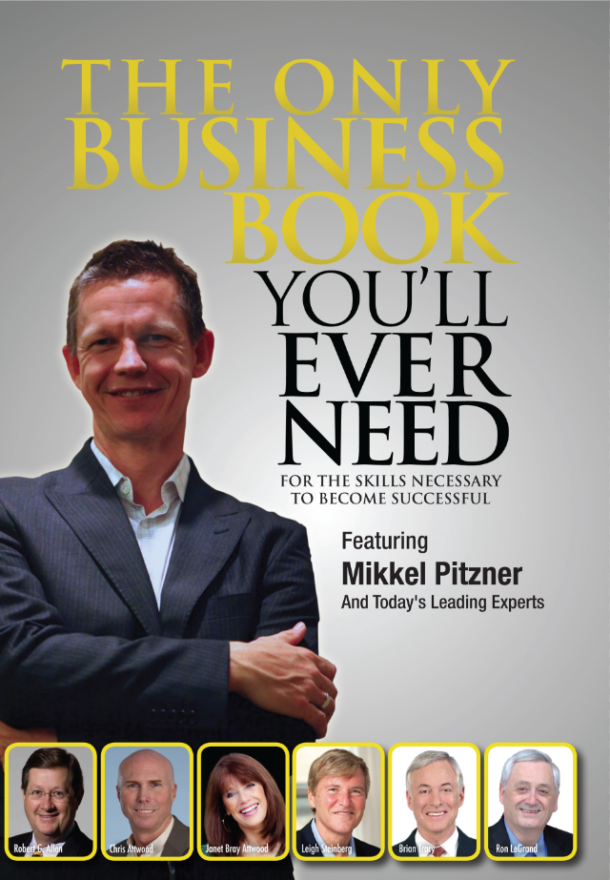
Why so many small business valuations are completely wrong, and what you need to watch out for when buying or selling.
In our last article, we talked about how businesses should be valued, using a multiple of EBITDA (or SDE for smaller companies), plus the fair market value of hard assets like equipment, inventory, and real estate.
And while that’s the professional standard…
I need to amend that statement.
Because in the real world of small business transactions, that’s often not what’s happening at all.
In fact, most small businesses are bought and sold at prices that are wildly arbitrary.
And one of the most dangerous mistakes I see, over and over again, is this:
A buyer hears about “multiples” and then applies that multiplier to the revenue line, not the EBITDA, SDE or Net Profit.
This mistake is destroying deals, bankrupting buyers, and cheating sellers out of millions.
Let me show you how this works, and how to make sure you never fall into this trap.
The $500K Mistake
Let me tell you about Tom (not his real name, but his story is 100% true).
Tom was actually an experienced business owner, but wanted to buy another business together with his children and their spouses to help them for their future. When he found a small service company doing $250,000 in annual revenue, he thought he’d found his ticket to meet the goals.
He’d heard something about “small businesses selling for 2-3 times their value” and figured this was his chance.
Tom’s calculation: $250K revenue × 3 = $750K offer
The seller was surprised but delighted. Tom seemed serious and had financing lined up.
The reality Tom never investigated:
- Revenue: $250K
- Total expenses: $210K
- Owner draws: $0 (owner worked for free, just covered expenses)
- Actual EBITDA: $40K
What the business was actually worth: $40K × 2.5 = $100K
The difference: $650K
Tom borrowed $750K to buy a business worth $100K, taking on debt that was 7.5 times higher than the business could ever support.
Six months later, when Tom couldn’t make his loan payments on a business generating $40K annually, he lost everything: the business, his savings, and his family home that he’d put up as collateral.
The seller walked away “rich”. Tom walked away ruined or certainly with a very large headache.
The Professional Standard vs. Street Reality
How professionals value businesses:
- Calculate EBITDA or SDE (actual cash-generating ability)
- Apply industry-appropriate multiple (typically 2x-8x and probably on the lower end of spectrum especially for a small revenue business)
- Add asset values separately
- Result: Logical, defendable valuation
How many small businesses actually get traded:
- Someone hears “businesses sell for 3x”
- They multiply revenue by 3
- They negotiate from that starting point
- Result: Completely arbitrary pricing
The gap between these two approaches is massive, and it’s costing people fortunes.
Why Revenue Multiples Are Financial Fiction
Here’s the brutal truth: Revenue is vanity. Profit is reality.
Revenue tells you nothing about:
❌ Profitability – A $5M revenue business with $4.9M in costs is worse than a $1M revenue business with $700K in costs
❌ Efficiency – High revenue often masks operational disasters
❌ Sustainability – Revenue can disappear overnight; profitable operations are more durable
❌ Owner dependency – Revenue doesn’t reveal if the business dies when the owner leaves
❌ Market position – Revenue doesn’t show competitive advantages or pricing power
❌ Growth potential – High revenue with low margins has limited upside
Real example:
Business A:
- Revenue: $3M
- Expenses: $2.85M
- EBITDA: $150K
- Revenue multiple value: $9M (at 3x)
- Professional value: $450K (at 3x EBITDA)
Business B:
- Revenue: $1.5M
- Expenses: $900K
- EBITDA: $600K
- Revenue multiple value: $4.5M (at 3x)
- Professional value: $1.8M (at 3x EBITDA)
Using revenue multiples, Business A looks more valuable. Using profit multiples, Business B is worth 4x more.
Guess which one a smart buyer should choose?
The Psychology Behind the Mistake
Why do buyers fall for revenue multiples?
Reason 1: It’s Easier
Looking at revenue is simple. One number. No analysis required.
Understanding profit requires digging into:
- Operating expenses
- Owner compensation
- Non-recurring costs
- Capital expenditures
- Working capital needs
Most buyers take the easy path — and pay for it later.
Reason 2: Seller Manipulation
Smart sellers know that revenue numbers sound bigger and more impressive than profit numbers.
“We’re a $5 million company” sounds better than “We generate $200K in owner cash flow.”
Same business. Very different story.
Reason 3: Financing Illusion
Banks and lenders often look at revenue multiples for quick assessments.
But they’re looking at ability to service debt, not business value.
A business with $3M revenue and $100K profit cannot service the same debt as a business with $1M revenue and $400K profit.
Reason 4: Inexperience
Most small business buyers are first-time buyers. They don’t understand valuation principles.
They hear “businesses sell for 3x” and assume it means 3x whatever number is biggest.
Education gap = expensive mistakes.
When Revenue Multiples Are Actually Used
Revenue multiples aren’t always wrong, but they’re rarely used for small businesses.
Industries where revenue multiples make sense:
- SaaS/Software: Predictable recurring revenue with known unit economics
- Media/Advertising: Revenue directly correlates to cash flow
- Licensing: Revenue flows through with minimal costs
Key characteristics:
- High margins (30%+ EBITDA margins)
- Recurring revenue (80%+ recurring)
- Scalable models (growth doesn’t require proportional cost increases)
- Predictable cash conversion (revenue reliably converts to cash)
For most small businesses – service companies, retail, manufacturing, restaurants – revenue multiples are meaningless.
The Real-World Damage
This mistake destroys value on both sides:
For Sellers:
- Overpricing based on revenue multiples scares away legitimate buyers
- Unrealistic expectations lead to extended time on market
- Weak positioning when buyers discover the profit reality
- Lower final price due to reduced negotiating credibility
For Buyers:
- Massive overpayment for businesses that can’t support the debt
- Cash flow crises when the business can’t service acquisition loans
- Forced liquidation when the math doesn’t work
- Personal financial ruin from guaranteeing unsustainable debt
I’ve seen buyers lose their homes, retirement savings, and marriages because they bought based on revenue multiples.
Case Study: The Restaurant Disaster
Background: Successful restaurant, $1.8M annual revenue
Buyer’s approach:
- Heard restaurants sell for “2x revenue”
- Offered: $1.8M × 2 = $3.6M
- Financed with SBA loan based on revenue projections
Financial reality:
- Revenue: $1.8M
- Food costs: $540K (30%)
- Labor: $630K (35%)
- Rent & utilities: $216K (12%)
- Other expenses: $324K (18%)
- Owner cash flow: $90K (5%)
Professional valuation: $90K × 2.5 = $225K
The outcome:
- Buyer took on $3.6M debt to buy a $225K business
- Monthly debt service: $28K
- Monthly business cash flow: $7.5K
- Result: Bankruptcy within 18 months
The seller got paid, but the buyer’s life was destroyed.
How to Protect Yourself
If You’re a Seller:
✅ Know your real numbers:
- Calculate your true EBITDA or SDE
- Understand what drives your profitability
- Have 3+ years of clean financials ready
✅ Educate legitimate buyers:
- Explain why your business is valuable
- Show profit trends and sustainability
- Demonstrate growth potential
✅ Avoid revenue-focused buyers:
- If they only ask about sales, they don’t understand value
- If they won’t look at profit margins, walk away
- If they seem confused by financial statements, find a different buyer
✅ Price based on profit multiples:
- Research comparable sales in your industry
- Use professional valuation methods
- Justify your multiple with business quality factors
If You’re a Buyer:
✅ Learn financial analysis:
- Understand P&L statements completely
- Calculate real owner cash flow
- Adjust for one-time expenses and owner perks
✅ Focus on profit, not revenue:
- Ask for 3+ years of tax returns and financial statements
- Calculate EBITDA or SDE properly
- Understand industry-appropriate multiples
✅ Stress-test the numbers:
- Can the business service acquisition debt?
- What happens if revenue drops 20%?
- Are the margins sustainable and defensible?
✅ Get professional help:
- Use experienced business brokers or M&A advisors
- Have accountants review the financials
- Get independent business valuations
The Small Business Valuation Reality
Here’s what most people don’t understand about small business valuations:
They’re often negotiated, not calculated.
Unlike public companies with efficient markets, small businesses sell in inefficient markets where:
- Information is limited
- Buyers are inexperienced
- Sellers are emotional
- Professional standards are inconsistent
This creates opportunities for both massive overpayment and incredible bargains.
The key is knowing which side of that equation you’re on.
Industry-Specific Reality Check
Here are realistic valuation approaches for common small businesses:
Service businesses: 1.5-4x EBITDA (depending on owner dependency)
Manufacturing: 2-5x EBITDA (depending on assets and market position)
Retail: 2-4x EBITDA (depending on location and brand strength)
Restaurants: 1.5-3x EBITDA (depending on concept and cash flow)
Professional practices: 0.5-2x revenue (but only for practices with 20%+ margins)
Notice: Even when revenue multiples are used, they’re only for high-margin businesses.
The Automated Millionaire Approach
In my Selling Your Business program, we focus on value-based pricing:
✅ True earnings analysis — Calculate real cash-generating ability
✅ Industry benchmarking — Understand what buyers actually pay
✅ Multiple optimization — Build factors that justify premium valuations
✅ Buyer education — Attract sophisticated buyers who understand value
✅ Professional presentation — Present financials that support your asking price
Because the worst way to sell your business is to let uninformed buyers set arbitrary prices based on revenue multiples.
Red Flags: When to Walk Away
As a seller, walk away if the buyer:
- Only asks about revenue, not profit
- Wants to “multiply sales by 3”
- Won’t review detailed financial statements
- Seems confused by basic business metrics
- Can’t explain their valuation methodology
As a buyer, walk away if the seller:
- Only talks about revenue growth
- Won’t provide profit and loss statements
- Claims “industry standard” pricing without justification
- Has unrealistic expectations about valuation
- Can’t explain their business’s profitability
Your Protection Strategy
Step 1: Get educated Learn how business valuation actually works in your industry.
Step 2: Know your numbers Calculate real EBITDA/SDE with proper adjustments.
Step 3: Use professionals Work with experienced brokers, accountants, and attorneys.
Step 4: Verify everything Don’t trust verbal claims, demand documentation.
Step 5: Stress-test the deal Make sure the economics work under realistic scenarios.
The Bottom Line Truth
Revenue is what your business collects. Profit is what your business keeps.
Buyers who focus on revenue are focused on the wrong thing.
Sellers who emphasize revenue over profit are telling the wrong story.
And deals based on revenue multiples are usually built on financial quicksand.
Don’t be the buyer who discovers this after signing the papers.
Don’t be the seller who accepts an offer that can’t close because the math doesn’t work.
Know what’s being multiplied. Know why it matters. Know when to walk away.
Your financial future depends on getting this right.
Written for business owners who refuse to let valuation ignorance destroy their wealth.
Ready to understand how business valuation really works? The education starts now — before you need it.
Don’t walk away from these resources:
My Selling Your Business (small) book is available here
Your FREE Selling My Business Checklist is available here
Your FREE Business Valuation Multiplier tool (see what happens to the price you can get for your businessif you make some improvements first), get the tool here


